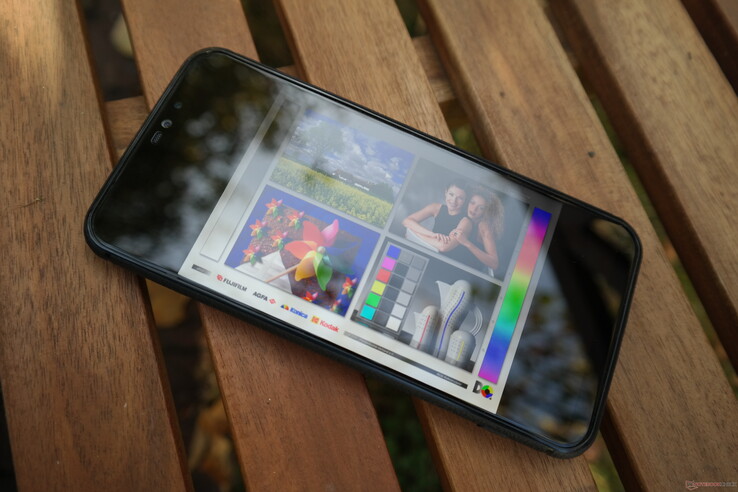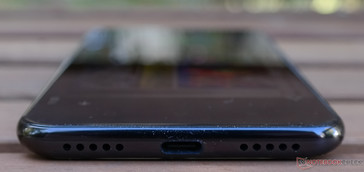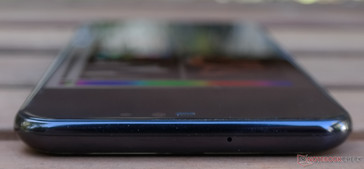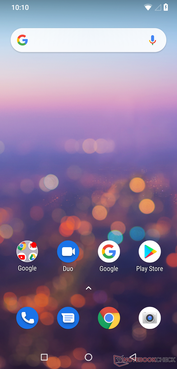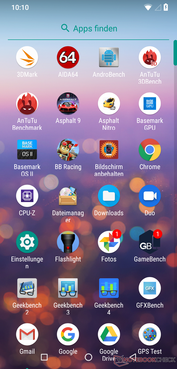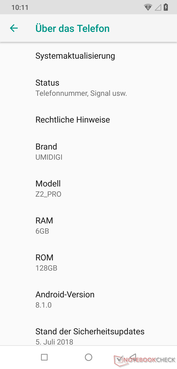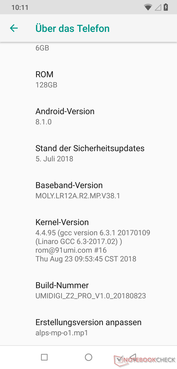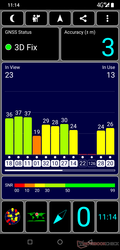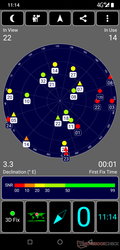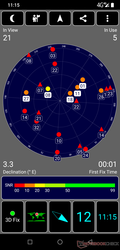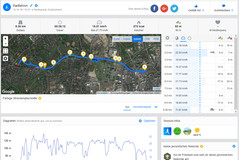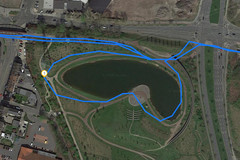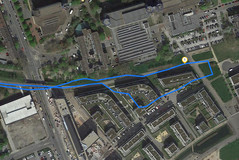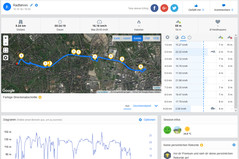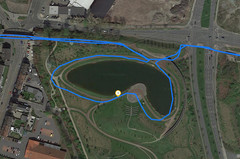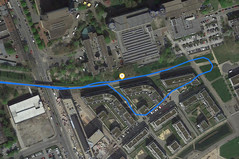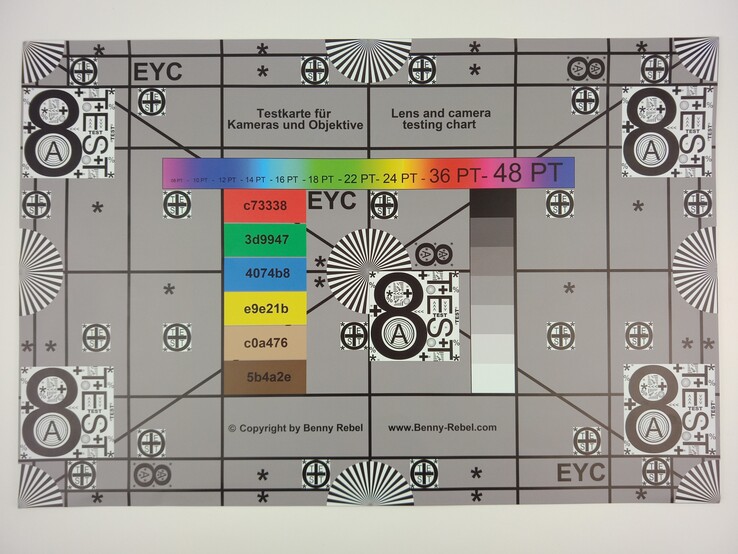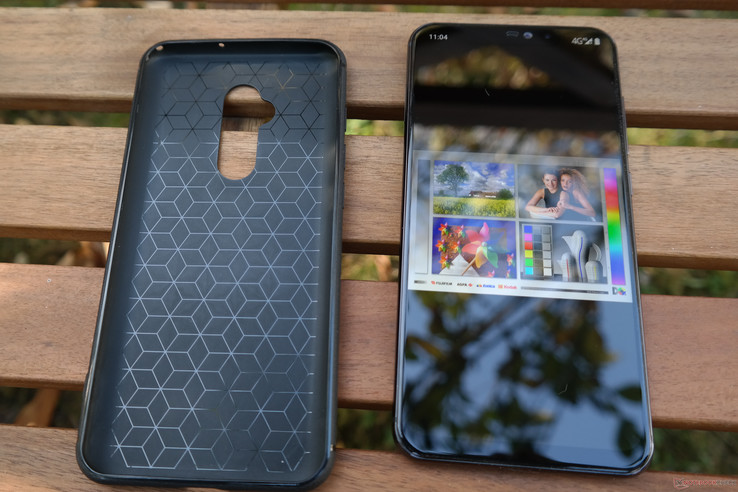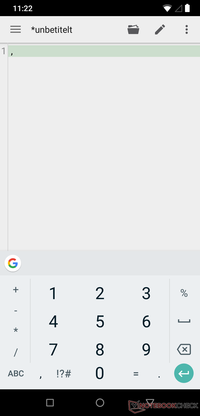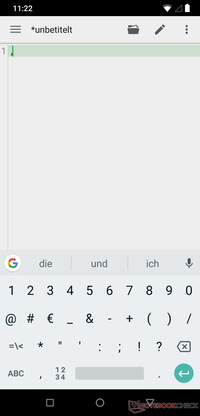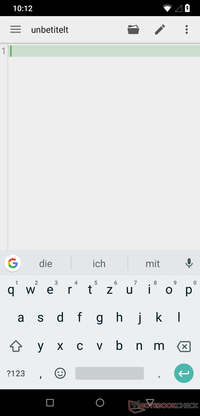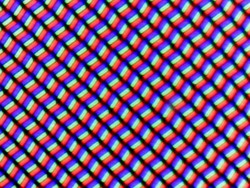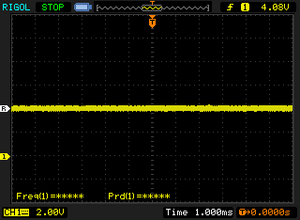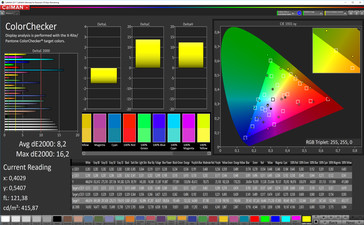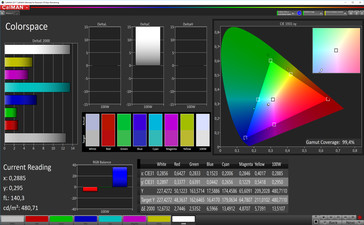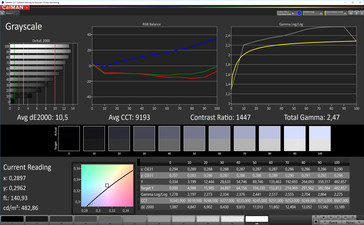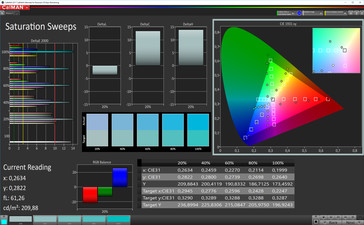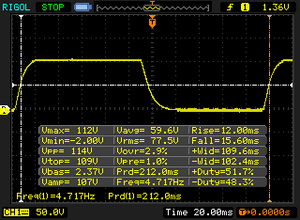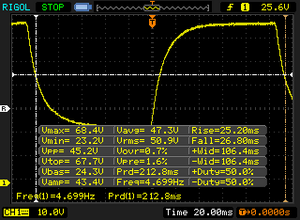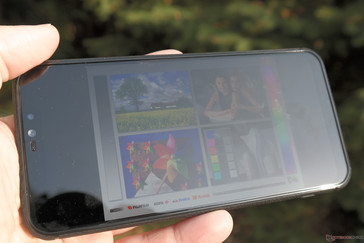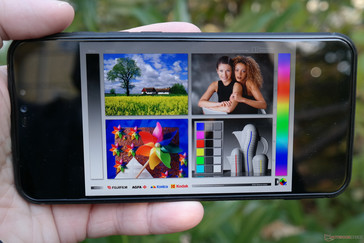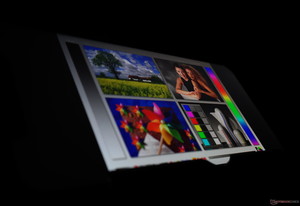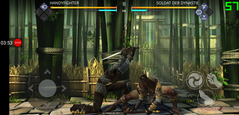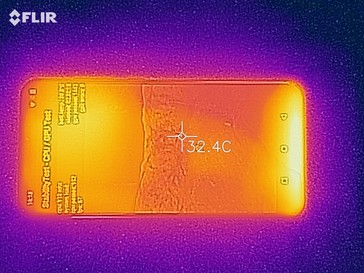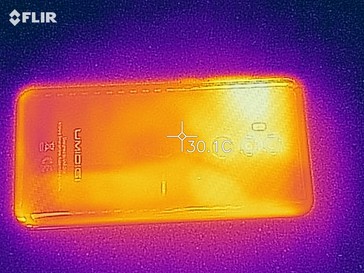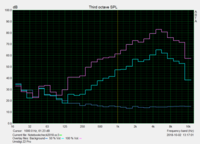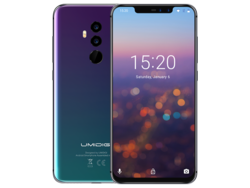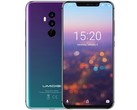Umidigi Z2 Pro Smartphone Review

The Umidigi Z2 Pro is available from various Chinese online retailers at a price proper to an upper mid-range smartphone. The two 16 MP cameras, display, 6 GB of RAM and 128 GB of storage space all seem like attractive features. The design and the big screen are also appealing. Here is an interesting question, though: Can the MediaTek Helio P60 processor (also known under its label "MT6771V") provide enough processing power to bring out the quality of the rest of the hardware? The processor is accompanied by an ARM Mali G72 MP3 graphics unit. The phone is also equipped with a fingerprint reader.
This is our first review of a device with the Helio P60 processor. As a result, there are no directly comparable devices—at least not when it comes to the processor. We chose the Xiaomi Mi Mix S2, the Huawei P10 Plus, the Honor View 10 and the HTC U11 Plus as the comparison devices for this review because their memory, storage and display features are similar to those of our test device. Besides the Huawei phone, however, these devices are often considerably faster.
Case - Z2 Pro with attractive design
The Umidigi Z2 Pro feels good in your hand. According to the manufacturer, the back side is made of ceramic. Our attempt to twist the phone was unsuccessful. Compared to the competitors—all of which are almost exactly the same size as our test device—at 165 g (0.36 lb), the Z2 Pro is comparatively lightweight and feels that way too. The back side is glossy and shimmers in a kind of checkered pattern. The three color options available for the Z2 Pro (carbon fiber black, twilight and blue) are visible only on the back side. Like most of the Z2 Pro's similarly thin competitors, the Umidigi phone has a camera bump where the back dual camera is located. When the phone is encased in its accompanying skin, the bump disappears in the intended notch.
Connectivity - Everything important is here
The MediaTek Helio P60 processor is presumably the smartphone's weakest link, though we will get to that when we closely examine its performance in our performance measurements. Otherwise, the phone's hardware configuration is impressive. With 6 GB of RAM and 128 GB of storage, there should not be any bottlenecking here. There are two speaker holes located on the bottom edge, though only one of them works. A USB Type C charging port is sandwiched in between. The port appears to support data transfer only at USB 2.0 speeds. When it came to the headphone jack, Umidigi chose to economize. The phone's packaging includes an adapter for the 3.5mm plug. The right side of the smartphone houses the volume rocker and power button—unfortunately in opposite order compared to normal, which is somewhat confusing at first. The nano SIM and microSD card slots are located on the other side. The smartphone can be used with two SIM cards or with one SIM card and one microSD card. The SD card can be formatted as internal storage. According to the spec sheet, the Umidigi phone does not have an exFAT file system (license fees need to be paid to Microsoft for that). As a result, memory cards should not be larger than 32 GB. FAT32 formatting is no longer sufficient for 48 GB and up. Bigger memory cards need to be in SDXC format. The Umi smartphone's outstanding features include its two 16 megapixel dual cameras on the front and back. The fingerprint reader—that in our experience was not particularly reactive—is located below the two back cameras.
Software - Spartan configuration
When it comes to the Z2 Pro's software configuration, Umidigi sets store by modesty. In essence, the manufacturer installed a pure Android system that uses the normal app drawer. Thankfully, additional software is nowhere to be found. A special app for the built-in radio is the only extra here. Directly following installation, users will otherwise find only the usual Google apps, apps for placing phone calls and sending texts, and the camera app.
Communication and GPS - Umidigi phone with accurate location services
Though the Umidigi phone is equipped with an ac WLAN chip, the speeds it reached in our test with our Linksys EA8500 reference router were only slightly faster than the theoretical maximum speed of a WLAN n chip. As a result, the Umidigi phone places in the middle range among the devices on our comparison list. The Xiaomi Mi Mix S2 manages to reach almost twice the Umidigi phone's speed.
With LTE Cat. 7, there should be enough data speed reserves on the go as well.
| Networking | |
| iperf3 transmit AX12 | |
| Xiaomi Mi Mix 2S | |
| HTC U11 Plus | |
| Umidigi Z2 Pro | |
| Honor View 10 | |
| Huawei P10 Plus | |
| iperf3 receive AX12 | |
| Xiaomi Mi Mix 2S | |
| HTC U11 Plus | |
| Umidigi Z2 Pro | |
| Honor View 10 | |
| Huawei P10 Plus | |
The built-in GPS module does a great job in our test with the "GPS Test" app. Outdoors, the phone's GPS was accurate to 3 meters (~10 feet), and its result indoors is not considerably worse (5 meters; ~16 feet). Our impression of the GPS was a little less clear-cut after our test bike ride. There were some differences between the paths recorded by our Garmin Edge 500 professional navigation device and those recorded by the Umidigi phone. Among other things, the phone seems not to retrieve its position as frequently. This resulted in the recorded path lacking smooth curves. At the path's rearmost turning point, both devices were a little off. In the end, the two measurements deviated by 120 meters (400 feet) out of a total distance of 10 kilometers (~6 miles). To position itself, the Z2 Pro uses satellites from the GPS, GLONASS and BeiDou networks.
Phone Function and Call Quality - Finally noise-free
Google's standard telephone app serves as the interface for placing phone calls. In our test call, the sound quality was top-notch. Our conversation partner's voice came across clearly and was easy to understand, and our voice was rendered well too. The built-in speaker also reproduces call audio well. A headset is not included in the Z2 Pro's packaging. The phone's noise cancellation works well. According to the manufacturer, the Z2 Pro supports dual SIM dual VoLTE and VoWifi.
Cameras - Umi smartphone with lots of lenses
Umidigi paid special attention to the Z2 Pro's cameras. Both the front and the back are equipped with 16-megapixel dual cameras. In both cases, the main camera has an 8-megapixel camera as a sidekick. In line with the two cameras' impressive specs, the photos do not disappoint. Both the front and the back camera take very good pictures. Even so, the Z2 Pro does not have the best camera among the competitors. Our test device's cameras reveal their greatest weakness when confronted with poor lighting. In these situations, the smartphone does considerably worse. The photos are very dark and look considerably less sharp. When it comes to image sharpness in good lighting, the BlackBerry Key 2 takes slightly superior pictures. It should be noted, however, that some of the other phones on this list are considerably more expensive. The Z2 Pro may very well have one of the best cameras in its price bracket. Front cameras with such high a resolution and correspondingly high photo quality are especially rare gems. For potential buyers looking for a good camera, this smartphone may be a preferred choice. The difference between the Z2 Pro's cameras and a good DSLR is obvious in our sample photos. Especially in dim lighting and in the realm of image sharpness, the contrast between these cameras is substantial.
Under controlled conditions in our test lab, our subjective impressions were validated with data. Even the finest details are easily recognizable on our test chart. The color reproduction is also astonishingly accurate. Several colors are exactly on target. The deviations in the other colors are minimal.
Accessories and Warranty - Umidigi Z2 Pro with dubious warranty
In terms of accessories, alongside the charging device and its USB cable, Umidigi also included an adapter for the audio connection that plugs into the USB Type C port. When the audio cable is plugged in, the phone cannot be charged at the same time. The package contents also include a silicone skin that fits the phone perfectly. In a visually appealing envelope, users will also find the SIM tool for opening the slot for SIM and SD cards, as well as a manual in English, German, Italian, Spanish, French and Chinese.
On Umidigi's website, the manufacturer promises a 1-year warranty—but in the same breath shifts that responsibility to the seller. As a result, it could be quite difficult to make sure this promise is valid. We fear the seller and Umidigi support could both exempt themselves from the responsibility to fulfill the warranty. Please see our Guarantees, Return policies and Warranties FAQ for country-specific information.
Input Devices and Operation
A 10-point touchscreen is built into the Umidigi phone as an input device. This touchscreen reacted quickly and without any recognizable delay in our test with "Real Piano". The standard Android keyboard serves as the phone's virtual keyboard. The position sensor's performance is less stellar. While we were playing Asphalt 9, we had to tilt the phone slightly to the left in order to drive straight. A second test with Beach Buggy Racing verified that this tilt was necessary to keep the vehicle going straight. This is clearly an alignment problem.
To make unlocking the Android phone easier and safer, a fingerprint reader is built into the back side. We were not particularly pleased with the reader, given that it often failed to recognize our fingerprint and left us unlocking the phone through the PIN input. In our short test, Face Unlock worked astonishingly well and could not be tricked with photos.
Display - Average brightness, good contrast
The IPS display offers little room for criticism. With a resolution of 1080x2246 pixels on a 6.2-inch display, the resulting pixel density of 402 dpi is in line with current norms. There is space for the clock to the left of the notch, while network connections and the battery status are displayed to the right. Within many apps, though, the area remains entirely black. Several of the screenshots on this page show this very clearly. At just over 500 cd/m², the brightness is in the appropriate range. The phone also has an excellent black value of 0.27 and a contrast ratio of 1774:1. By and large, the Z2 Pro is on par with the competitors here. However, the display's very uneven brightness distribution is a problem. While the upper left corner reached over 520 cd/m² in our tests, the opposite corner on the diagonal only reached just over 380 cd/m².
| |||||||||||||||||||||||||
Brightness Distribution: 73 %
Center on Battery: 479 cd/m²
Contrast: 1774:1 (Black: 0.27 cd/m²)
ΔE ColorChecker Calman: 8.2 | ∀{0.5-29.43 Ø4.78}
ΔE Greyscale Calman: 10.5 | ∀{0.09-98 Ø5}
99.4% sRGB (Calman 2D)
Gamma: 2.47
CCT: 9193 K
| Umidigi Z2 Pro IPS, 2246x1080, 6.2" | Huawei P10 Plus LTPS, 2560x1440, 5.5" | HTC U11 Plus Super LCD 6, 2880x1440, 6" | Honor View 10 IPS, 2160x1080, 6" | Xiaomi Mi Mix 2S IPS, 2160x1080, 6" | |
|---|---|---|---|---|---|
| Screen | 26% | 27% | 27% | 5% | |
| Brightness middle (cd/m²) | 479 | 568 19% | 361 -25% | 530 11% | 492 3% |
| Brightness (cd/m²) | 466 | 562 21% | 356 -24% | 523 12% | 463 -1% |
| Brightness Distribution (%) | 73 | 92 26% | 90 23% | 88 21% | 90 23% |
| Black Level * (cd/m²) | 0.27 | 0.43 -59% | 0.21 22% | 0.35 -30% | 0.59 -119% |
| Contrast (:1) | 1774 | 1321 -26% | 1719 -3% | 1514 -15% | 834 -53% |
| Colorchecker dE 2000 * | 8.2 | 2.4 71% | 2.5 70% | 2.4 71% | 2.4 71% |
| Colorchecker dE 2000 max. * | 16.2 | 3.8 77% | 5.3 67% | 5.5 66% | 6.2 62% |
| Greyscale dE 2000 * | 10.5 | 2.5 76% | 1.7 84% | 2.2 79% | 4.5 57% |
| Gamma | 2.47 89% | 2.37 93% | 2.21 100% | 2.25 98% | 2.25 98% |
| CCT | 9193 71% | 6779 96% | 6580 99% | 6598 99% | 6395 102% |
* ... smaller is better
Screen Flickering / PWM (Pulse-Width Modulation)
| Screen flickering / PWM not detected | |||
In comparison: 53 % of all tested devices do not use PWM to dim the display. If PWM was detected, an average of 8101 (minimum: 5 - maximum: 343500) Hz was measured. | |||
The Umidigi smartphone's color reproduction is not one of its more alluring features either. In the CalMAN test, the display revealed significant color deviations toward the blue. The average DeltaE value came to an unsatisfactory 8.2, and the maximum value was a whopping 16.2. The blue cast is also clearly visible along the grayscale.
Display Response Times
| ↔ Response Time Black to White | ||
|---|---|---|
| 27.6 ms ... rise ↗ and fall ↘ combined | ↗ 12 ms rise | |
| ↘ 15.6 ms fall | ||
| The screen shows relatively slow response rates in our tests and may be too slow for gamers. In comparison, all tested devices range from 0.1 (minimum) to 240 (maximum) ms. » 69 % of all devices are better. This means that the measured response time is worse than the average of all tested devices (20.2 ms). | ||
| ↔ Response Time 50% Grey to 80% Grey | ||
| 52 ms ... rise ↗ and fall ↘ combined | ↗ 25.2 ms rise | |
| ↘ 26.8 ms fall | ||
| The screen shows slow response rates in our tests and will be unsatisfactory for gamers. In comparison, all tested devices range from 0.165 (minimum) to 636 (maximum) ms. » 88 % of all devices are better. This means that the measured response time is worse than the average of all tested devices (31.6 ms). | ||
The display also has very stable viewing angles. Thanks to IPS technology, the screen content is always perfectly recognizable, even from very wide angles. The color reproduction hardly changes either. The only weakness here is that blacks can slide into more of a gray at high contrast.
Performance - MediaTek speeds
As previously mentioned, the Z2 Pro's Mediatek MT6771V chip cannot keep pace with high-end cards. Some of the competition manages speeds up to nearly twice as fast. Even so, the phone is by no means a straggler. It is almost three times as fast as current entry-level phones. In the graphics benchmarks, things look a little more nuanced. With its Mali G72 MP3 GPU, the Z2 Pro is sometimes on par with our list of comparison devices, but sometimes substantially slower. In the more comprehensive PCMark benchmarks, the phone makes a good effort and lies on par with the other smartphones in some disciplines. Phones with SoCs that run at similar speeds—some of which we have listed again here, such as the Xiaomi Mi 6X, the BQ Aquaris X2 and the Huawei Mate 20 Lite—fall substantially behind the Umidigi phone in PCMark. The results in the rest of the benchmarks, on the other hand, look more or less, as one would expect.
| Basemark GPU 1.1 | |
| 1920x1080 Vulkan Medium Offscreen (sort by value) | |
| Umidigi Z2 Pro | |
| Huawei Mate 20 Lite | |
| Average Mediatek Helio P60 (n=1) | |
| Vulkan Medium Native (sort by value) | |
| Umidigi Z2 Pro | |
| Huawei Mate 20 Lite | |
| BQ Aquaris X2 | |
| Xiaomi Mi 6X | |
| Average Mediatek Helio P60 (n=1) | |
| 1920x1080 OpenGL Medium Offscreen (sort by value) | |
| Umidigi Z2 Pro | |
| Huawei Mate 20 Lite | |
| BQ Aquaris X2 | |
| Xiaomi Mi 6X | |
| Average Mediatek Helio P60 (7.98 - 11.7, n=2) | |
| AnTuTu v7 - Total Score (sort by value) | |
| Umidigi Z2 Pro | |
| HTC U11 Plus | |
| Xiaomi Mi Mix 2S | |
| Huawei Mate 20 Lite | |
| BQ Aquaris X2 | |
| Xiaomi Mi 6X | |
| Average Mediatek Helio P60 (119367 - 138589, n=5) | |
| VRMark - Amber Room (sort by value) | |
| Umidigi Z2 Pro | |
| Huawei Mate 20 Lite | |
| BQ Aquaris X2 | |
| Xiaomi Mi 6X | |
| Average Mediatek Helio P60 (1029 - 1119, n=2) | |
| Basemark ES 3.1 / Metal - offscreen Overall Score (sort by value) | |
| Umidigi Z2 Pro | |
| HTC U11 Plus | |
| Huawei Mate 20 Lite | |
| BQ Aquaris X2 | |
| Xiaomi Mi 6X | |
| Average Mediatek Helio P60 (322 - 413, n=2) | |
| Average of class Smartphone (205 - 7731, n=35, last 2 years) | |
In the browser benchmark, the Umidigi phone can at least easily overtake the now somewhat older Honor View 10. For the most part, though, the rest of the competitors speed past our test device.
| JetStream 1.1 - Total Score | |
| Xiaomi Mi Mix 2S (Chrome 66.0.3359.158) | |
| HTC U11 Plus (Chrome 63) | |
| Huawei P10 Plus | |
| Xiaomi Mi 6X (Chrome 67) | |
| Huawei Mate 20 Lite (Chrome 69) | |
| Average Mediatek Helio P60 (41.7 - 48.9, n=6) | |
| Umidigi Z2 Pro (Chrome 69) | |
| BQ Aquaris X2 (Chrome 67) | |
| Honor View 10 (Chrome 63) | |
| Octane V2 - Total Score | |
| Average of class Smartphone (2228 - 121337, n=197, last 2 years) | |
| Xiaomi Mi Mix 2S (Chrome 66.0.3359.158) | |
| HTC U11 Plus (Chrome 63) | |
| Huawei P10 Plus (Chrome 58.0.3029.83) | |
| Xiaomi Mi 6X (Chrome 67) | |
| Huawei Mate 20 Lite (Chrome 69) | |
| BQ Aquaris X2 (Chrome 67) | |
| Average Mediatek Helio P60 (8287 - 10257, n=7) | |
| Umidigi Z2 Pro (Chrome 69) | |
| Honor View 10 (Chrome 63) | |
| Mozilla Kraken 1.1 - Total | |
| Honor View 10 (Chrome 63) | |
| Xiaomi Mi 6X (Chrome 67) | |
| BQ Aquaris X2 | |
| Average Mediatek Helio P60 (4309 - 4773, n=6) | |
| Umidigi Z2 Pro (Chrome 69) | |
| Huawei Mate 20 Lite (Chrome 69) | |
| HTC U11 Plus (Chrome 63) | |
| Huawei P10 Plus (Chrome 58.0.3029.83) | |
| Xiaomi Mi Mix 2S (Chrome 66.0.3359.158) | |
| Average of class Smartphone (257 - 28190, n=154, last 2 years) | |
| WebXPRT 3 - Overall | |
| Average of class Smartphone (38 - 380, n=31, last 2 years) | |
| Xiaomi Mi Mix 2S | |
| Xiaomi Mi 6X (Chrome 67) | |
| Huawei Mate 20 Lite (Chrome 69) | |
| BQ Aquaris X2 (Chrome 67) | |
| Umidigi Z2 Pro | |
| Average Mediatek Helio P60 (43 - 54, n=4) | |
| WebXPRT 2015 - Overall | |
| Xiaomi Mi Mix 2S (Chrome 66.0.3359.158) | |
| HTC U11 Plus (Chrome 63) | |
| Xiaomi Mi 6X (Chrome 67) | |
| Umidigi Z2 Pro (Chrome 69) | |
| BQ Aquaris X2 (Chrome 67) | |
| Honor View 10 (Chrome 63) | |
| Average Mediatek Helio P60 (139 - 167, n=2) | |
| Huawei Mate 20 Lite (Chrome 69) | |
| Huawei P10 Plus | |
* ... smaller is better
In terms of the storage access speed, the Z2 Pro's results can be described as average. Our test with a Toshiba Exceria Pro M501 reference memory card showed that while the device reads SD cards surprisingly fast, the built-in storage medium generally goes about its work at a more leisurely pace. The competition often performs considerably better here. Compared to the averages in its price class, however, the Z2 Pro's results are good.
| Umidigi Z2 Pro | Huawei P10 Plus | HTC U11 Plus | Honor View 10 | Xiaomi Mi Mix 2S | Average 128 GB eMMC Flash | Average of class Smartphone | |
|---|---|---|---|---|---|---|---|
| AndroBench 3-5 | 135% | 128% | 159% | 189% | 33% | 839% | |
| Sequential Read 256KB (MB/s) | 292.9 | 733 150% | 728 149% | 810 177% | 756 158% | 300 ? 2% | 2228 ? 661% |
| Sequential Write 256KB (MB/s) | 188.1 | 182.6 -3% | 207.9 11% | 194.3 3% | 208.1 11% | 195.1 ? 4% | 1852 ? 885% |
| Random Read 4KB (MB/s) | 86.2 | 173.1 101% | 132.4 54% | 144.3 67% | 135.1 57% | 85.9 ? 0% | 296 ? 243% |
| Random Write 4KB (MB/s) | 20.34 | 149.8 636% | 135.7 567% | 160 687% | 128.4 531% | 58.1 ? 186% | 339 ? 1567% |
| Sequential Read 256KB SDCard (MB/s) | 76.1 ? | 54 ? -29% | 75.4 ? -1% | 81 ? 6% | 78.1 ? 3% | ||
| Sequential Write 256KB SDCard (MB/s) | 58.9 ? | 33.61 ? -43% | 51.3 ? -13% | 65.1 ? 11% | 61.8 ? 5% |
Games - Tilted head necessary for car racing
For a MediaT ek processor, the Helio P60 is quite fast. The graphics unit also provides adequate performance power, even for current games such as Asphalt 9. Given these processors' capacities, they hardly limit users' gaming experience at all. However, when playing auto racing games that utilize the position sensor, it would be advantageous to have a head that naturally tilts left at a 30-degree angle. This is because, as previously mentioned, the position sensor is obviously faulty.
Shadow Fight 3
Asphalt 9
World of Tanks Blitz
| Asphalt 9: Legends | |||
| Settings | Value | ||
| High Quality | 28 fps | ||
| Standard / low | 29 fps | ||
| World of Tanks v8 | |||
| Resolution | Settings | Value | |
| 1024x768 | Minimum Preset | ||
Emissions
Temperature - Keeps cool
The smartphone's heat generation is generally quite minimal. When not in active use, the temperature remained below 30 °C (86 °F) in every spot we measured. If the user plays graphics-heavy games, the temperatures rise to up to 36 °C (96.8 °F) in several spots. This level of warmth is also completely harmless. Having said that, we used the phone for some time with the skin that was included in the packaging, and it felt extremely warm after various benchmark tests. That impression is subjective, but it is possible that the skin prevents effective heat exchange. As a result, we would say the skin's usability is questionable.
(+) The maximum temperature on the upper side is 33.3 °C / 92 F, compared to the average of 35.2 °C / 95 F, ranging from 21.9 to 247 °C for the class Smartphone.
(+) The bottom heats up to a maximum of 38.6 °C / 101 F, compared to the average of 34 °C / 93 F
(+) In idle usage, the average temperature for the upper side is 27.7 °C / 82 F, compared to the device average of 32.9 °C / 91 F.
Speaker - Bach is dead
Contrary to outward appearances, the Umidigi Z2 Pro only has a mono speaker. In terms of its sound quality, there are high points and low points. On the one hand, the speaker's maximum volume is relatively loud. On the other, it suffers from the typical smartphone ailment of a lack of bass. The Z2 Pro is not going to get any extra laurels in this discipline.
Umidigi Z2 Pro audio analysis
(+) | speakers can play relatively loud (88.1 dB)
Bass 100 - 315 Hz
(-) | nearly no bass - on average 23.9% lower than median
(±) | linearity of bass is average (9.8% delta to prev. frequency)
Mids 400 - 2000 Hz
(±) | higher mids - on average 5.3% higher than median
(+) | mids are linear (6.3% delta to prev. frequency)
Highs 2 - 16 kHz
(-) | very high highs - on average 15.1% higher than median
(+) | highs are linear (6.9% delta to prev. frequency)
Overall 100 - 16.000 Hz
(±) | linearity of overall sound is average (28.3% difference to median)
Compared to same class
» 74% of all tested devices in this class were better, 5% similar, 22% worse
» The best had a delta of 11%, average was 35%, worst was 134%
Compared to all devices tested
» 85% of all tested devices were better, 3% similar, 12% worse
» The best had a delta of 4%, average was 24%, worst was 134%
Xiaomi Mi Mix 2S audio analysis
(+) | speakers can play relatively loud (83.1 dB)
Bass 100 - 315 Hz
(-) | nearly no bass - on average 26% lower than median
(±) | linearity of bass is average (9.2% delta to prev. frequency)
Mids 400 - 2000 Hz
(+) | balanced mids - only 4% away from median
(+) | mids are linear (5.1% delta to prev. frequency)
Highs 2 - 16 kHz
(+) | balanced highs - only 3% away from median
(+) | highs are linear (3.4% delta to prev. frequency)
Overall 100 - 16.000 Hz
(±) | linearity of overall sound is average (20.5% difference to median)
Compared to same class
» 35% of all tested devices in this class were better, 9% similar, 56% worse
» The best had a delta of 11%, average was 35%, worst was 134%
Compared to all devices tested
» 53% of all tested devices were better, 8% similar, 39% worse
» The best had a delta of 4%, average was 24%, worst was 134%
Battery Life - Better than expected
Energy Consumption
While MediaTek processors generally do not offer much in the way of performance, they often make up for it with their relatively moderate energy consumption rates. In our case, the processor is both powerful and energy conserving. Compared to the competition, our test phone is only just barely beat by the HTC U11 Plus here. The results are almost exactly the same as the overall average for smartphones. This demonstrates that our phone is absolutely average.
The charging device included in the box fully charges the phone in just over 2 hours. The phone supposedly even supports 15W wireless charging, the fastest version to date. Unfortunately, we did not have a charging device for testing this.
| Off / Standby | |
| Idle | |
| Load |
|
Key:
min: | |
| Umidigi Z2 Pro 3550 mAh | Huawei P10 Plus 3750 mAh | HTC U11 Plus 3930 mAh | Honor View 10 3750 mAh | Xiaomi Mi Mix 2S 3400 mAh | Average Mediatek Helio P60 | Average of class Smartphone | |
|---|---|---|---|---|---|---|---|
| Power Consumption | -49% | 7% | -29% | -19% | -12% | -24% | |
| Idle Minimum * (Watt) | 0.71 | 1.03 -45% | 0.51 28% | 1.05 -48% | 0.75 -6% | 0.97 ? -37% | 0.842 ? -19% |
| Idle Average * (Watt) | 2.01 | 2.61 -30% | 1.62 19% | 2.36 -17% | 2.25 -12% | 2.36 ? -17% | 1.439 ? 28% |
| Idle Maximum * (Watt) | 2.03 | 2.83 -39% | 1.87 8% | 2.41 -19% | 2.26 -11% | 2.41 ? -19% | 1.624 ? 20% |
| Load Average * (Watt) | 3.61 | 7.03 -95% | 3.92 -9% | 4.93 -37% | 4.89 -35% | 3.53 ? 2% | 7.03 ? -95% |
| Load Maximum * (Watt) | 7.34 | 10.08 -37% | 8.27 -13% | 9.04 -23% | 9.6 -31% | 6.45 ? 12% | 11.3 ? -54% |
* ... smaller is better
Battery Life
For the most part, the battery life corroborates our good results in the energy consumption tests. The Xiaomi Mi Mix S2 comes in a little ahead, even though it has a smaller battery. The rest of the competitors probably reach longer battery run times than our test phone because of their larger batteries. Even so, the battery life should be sufficient to get through the day.
| Umidigi Z2 Pro 3550 mAh | Huawei P10 Plus 3750 mAh | HTC U11 Plus 3930 mAh | Honor View 10 3750 mAh | Xiaomi Mi Mix 2S 3400 mAh | |
|---|---|---|---|---|---|
| Battery runtime | 1% | 6% | 12% | 7% | |
| Reader / Idle (h) | 21.2 | 27.6 30% | 27.1 28% | 27.9 32% | 28 32% |
| WiFi v1.3 (h) | 11.2 | 12.7 13% | 10.1 -10% | 11.3 1% | 11.9 6% |
| Load (h) | 4.9 | 2.9 -41% | 4.9 0% | 5.1 4% | 4 -18% |
| H.264 (h) | 12.6 | 10.2 | 13.7 | 12 |
Pros
Cons
Verdict
The Umidigi Z2 Pro is a typical Chinese smartphone. It does so much right and you think, "This would be the perfect phone for me," but then there is a little snag.
But first things first, the positive: The smartphone is available from several Chinese online retailers for 250 Euros (~$285). That is a very good price for a phone with 6 GB of RAM and 128 GB of storage. The processor and the graphics unit are not the quickest on the market, but they provide more than enough processing power to meet most users' needs. The design has the potential to win over plenty of people. The manufacturing quality is flawless. The cameras are very good, even if not excellent.
Generous hardware, attractive, good cameras, and a little problem.
All of that looks rather good, but of course we did find a problem: the position sensor has a "special" tilt. We tested the sensor in two racing games, and in both cases, we had to hold the phone at a slight tilt in order to drive straight. We subtracted one percentage point from the overall rating for that. For those who use this function often, either because they play a lot of games or want to use the compass, this is a no-go. Should we discover that this is not a problem with the entire series, but rather just the device we received, we will increase the score again. The fingerprint reader also reacted very slowly and often not at all.
For prospective buyers who can do without these features or would be satisfied with their limited functionality, we absolutely recommend the Z2 Pro.
Umidigi Z2 Pro
- 10/26/2018 v6 (old)
Florian Schaar




